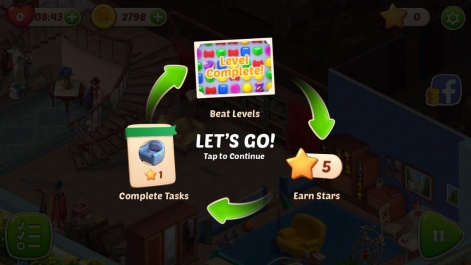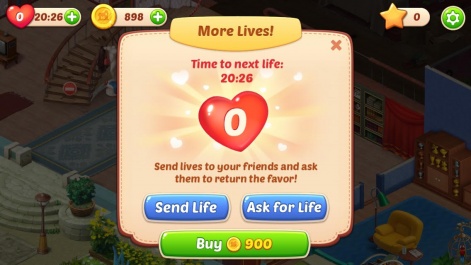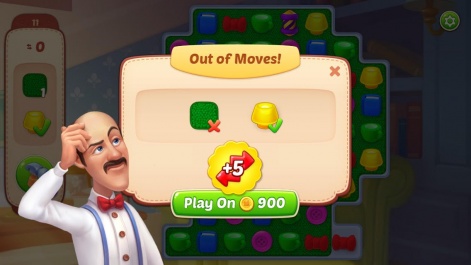Welcome back to the In-App Purchase Inspector - our regular look at free-to-play games from the consumer's perspective.
In each instalment, we consider the incentives or pressure applied to make in-app purchases, their perceived value, the expansion offered by IAPs and the overall value of the experience.
The end goal is to see whether the game makes a good enough case for us to part with our cash, or whether players are content - or engaged enough - to 'freeload'.
This time we're taking a look at Homescapes, the interior design-themed follow-up to Playrix's breakout mobile hit Gardenscapes.
Welcome home
Despite Russian studio Playrix having launched some successful games previously, it was 2016's Gardenscapes that made the mobile gaming world really stand up and take notice.
Gardenscapes, which was for much of its development a hidden object title, combines match-three gameplay with an ongoing narrative and some very light garden design elements.
Homescapes is very much a continuation of the Gardenscapes formula.
This makes it distinct in a genre in which new ideas are rare, and the game's grossing ranks show that players were receptive to such a combination.
Understandably keen not to lose that magic, Homescapes is very much a continuation of the same formula, with protagonist Austin the butler swapping gardening for home renovation.
Matching designs
The game begins with Austin returning to his family home, where he is shocked to learn that his parents intend to sell up and move elsewhere.
The player's role, then, is to help him spruce up the place in an effort to change their minds. Jobs to this end - like replacing a chair or laying a carpet - are added to a to-do list, in a manner more familiar to the resource management genre.

But instead of having to go out and buy the resources to fulfil these demands, here tasks are tackled by completing match-three stages.
Each level completed yields a Star, which is then used to complete a task. When a task is completed, the player gets to choose which of three designs they prefer.
This allows the player to slowly tailor the home's design, and gives an extra visual pay-off to reward each completed task.
Play to progress
But like in Gardenscapes, Stars aren't available through in-app purchases; they can only be earned by completing levels.
Instead, things are streamlined with a single currency: Coins. These are also earned by completing levels - you get more depending on how well you perform in each - but can also be bought using real money.

Coins come in bundles ranging from $0.99 for 1,000 to $99.99 for 150,000. Their most important use is probably to buy Lives which, in a system familiar to Candy Crush Saga players, deplete with each failure in a level, are capped at five and regenerate at a rate of one per 25 minutes.
One Life costs 900 Coins, which is around $0.90 in real money. The other major use for Coins is to buy Boosters.
This means that spending money in Homescapes can be used to enable gameplay, or to acquire consumables that make it easier - never to bypass or replace it.
Do It Yourself
But the pared-back approach can have its downsides. For instance, with only one currency, one can quickly find themselves stuck and unable to progress.
When facing a particularly tricky level, I found myself with 898 Coins - just two shy of being able to buy a new Life, or to get five extra moves after running out - but instead had to keep banging my head against it at 25 minute intervals.

And unless you complete a level, there is no way of earning more Coins. This also means you can't buy any Boosters to make the level more achievable, or continue a level after running out of moves.
Some games will use rewarded video ads to help the player out of such tight spots, but here the choice is to keep grinding away or to pay money.
This isn't necessarily bad, of course - it's the fundamental principle of free-to-play games at its most distilled - but it goes to show that simplicity doesn't always equal player friendly.
At some level, it seems, it's unavoidable that frustration can be a powerful motivating factor to spend money.
Back to basics
But other than that, it's hard to know how to critique the monetisation of Homescapes.
Gardenscapes showed that a mobile hit needn't reinvent the wheel, and Homescapes sticks to that with tried-and-true monetisation techniques.

The hook is the story which, charming rather than gripping, bobs along at a gentle pace but is surprisingly enjoyable.
Completing a level means not only the warm feeling of progression, but the next little slice of Austin's pleasantly mundane domestic adventure.
And this, narrative as a monetisation hook, is probably the most interesting takeaway from Homescapes and Gardenscapes before it.





















